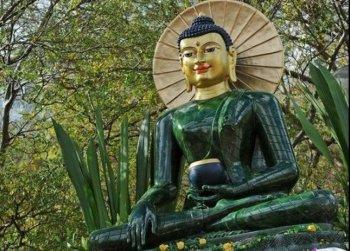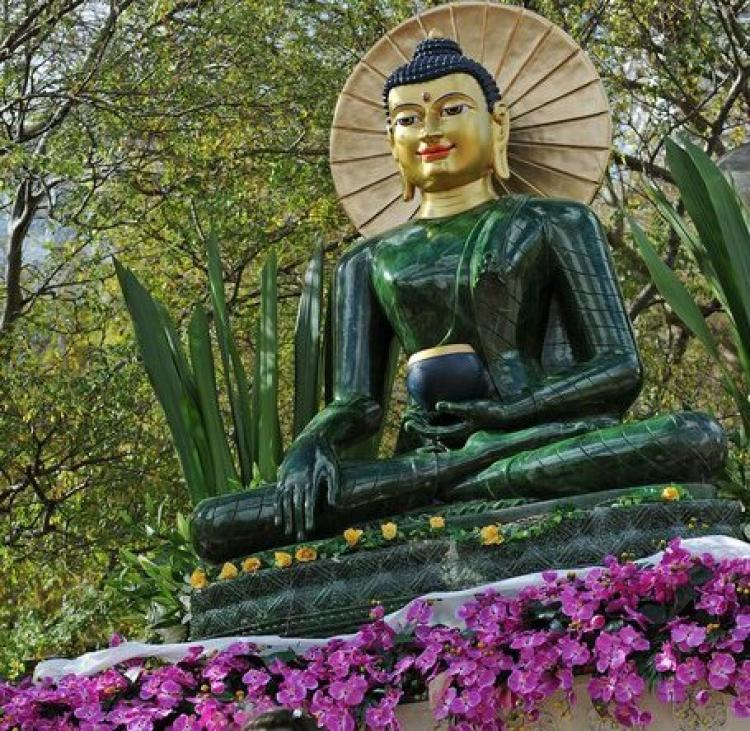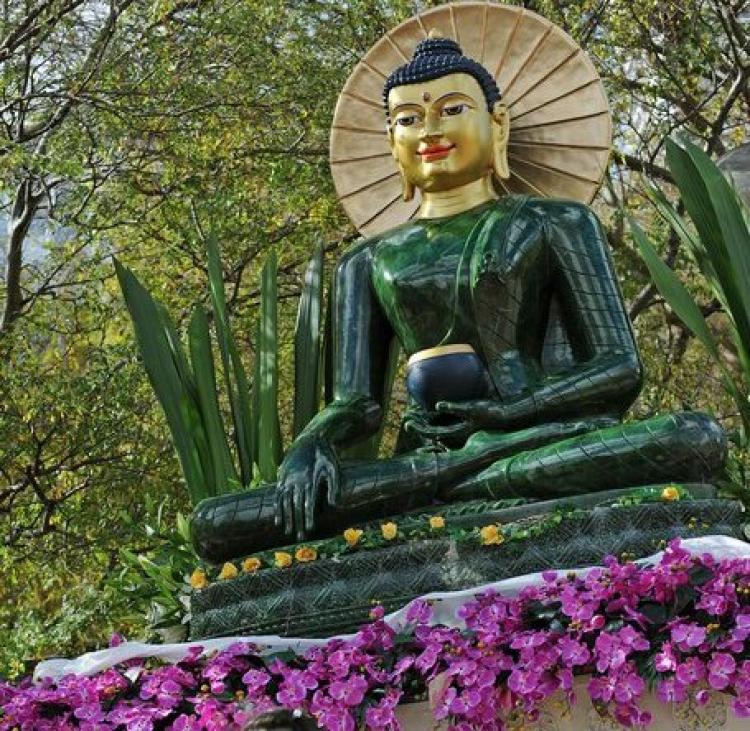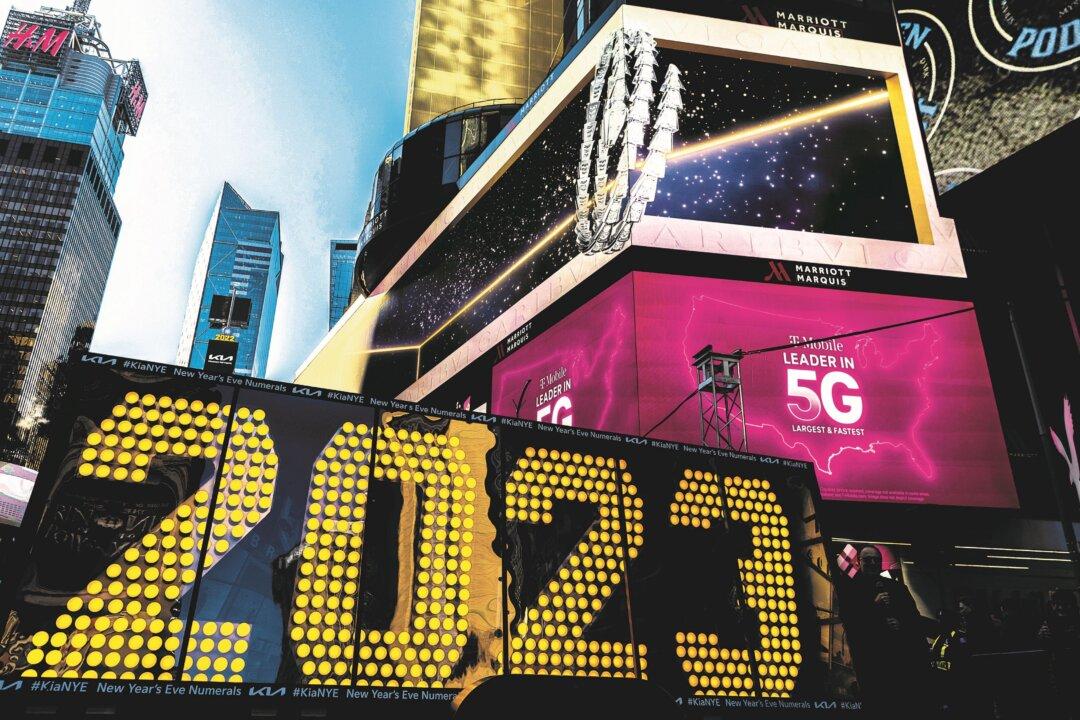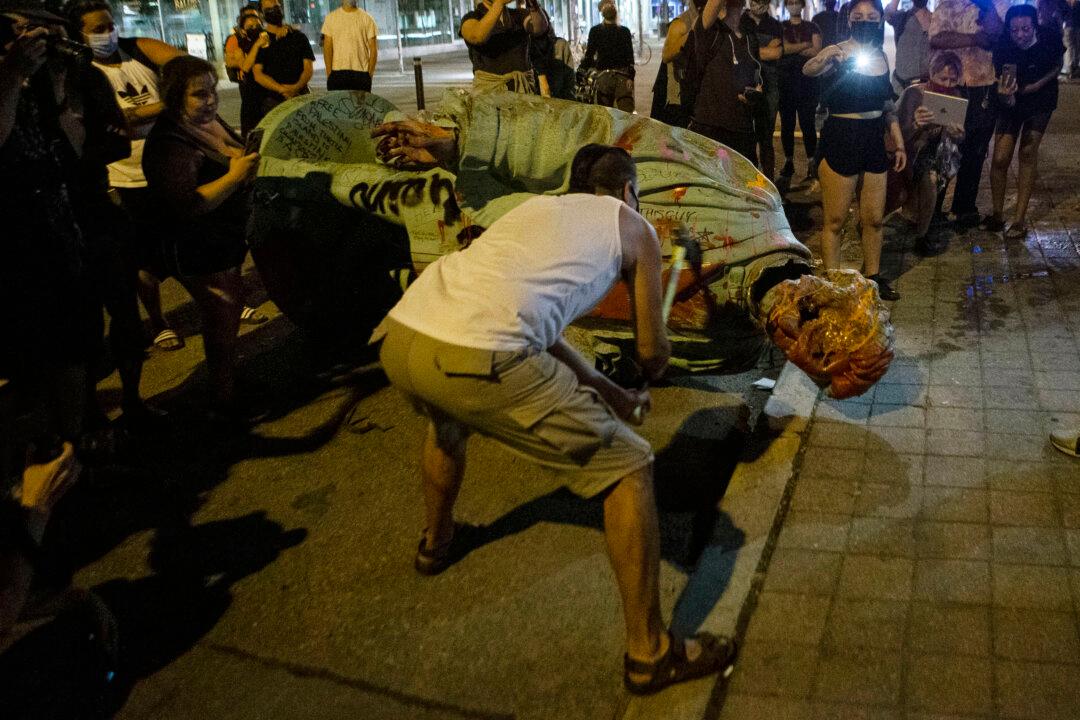A huge four-tonne jade Buddha statue that arrived in Canada last weekend as part of a world tour had its beginnings in British Columbia a decade ago.
The 2.5-metre high statue was carved from a mammoth 18-tonne jade boulder found at the Polar Jade mine near Dease Lake in northwestern B.C. Dubbed “Polar Pride,” the boulder is the largest piece of pure gem-grade nephrite jade ever found, says jade miner Kirk Makepeace.
Makepeace is president of Jade West Resources, the company that supplied the giant green gemstone to an international Buddhist organization in Thailand where the figure of the Buddha was carved.
The first challenge was finding a buyer who wouldn’t break up the piece and use it for jewellery, says Makepeace. “Because it was gem-grade jade, we were reluctant to sell it for something that was less than remarkable.”
The second was moving the boulder from the mine through 160 kilometres of rugged terrain to the nearest road.
“This was a very large piece of jade and because our mines are very remote, it’s a struggle to get something this large out and our mine sites are only accessible for 60 to 80 days a year. Shipping it to Thailand was fairly easy to do. The tough part was getting it from the mine to Vancouver,” he says.
It took four years to clinch the deal with the Great Stupa of Universal Compassion, a temple being built near Bendigo in southeast Australia where the statue will reside permanently after its world tour.
But Makepeace didn’t mind the wait.
“It pays off in dividends to the Canadian jade industry and our company for decades and perhaps centuries, because it will always remain as an example of the finest jade in the world that came from British Columbia and carved into such an iconic statue.”
The Jade Buddha for Universal Peace began its world tour in Vietnam in March 2009 and has since gone on display in Australia and the United States. It made its first stop in Canada on June 12 at a Buddhist centre near Toronto, and over the summer it will be on show in Edmonton and Vancouver. The statue, worth $5 million, was consecrated by the Dalai Lama during his visit to Australia in December 2009.
Makepeace says the tour has boosted interest in Canadian jade.
“Very few Canadians are aware that Canada has the world’s largest reserves of jade. British Columbia has the largest reserves, and actually B.C. is where the only commercial mines operate.”
Another large (4.5 tonne) piece of gem-grade jade from the Polar Jade mine graces the entrance of B.C.-Canada House in Beijing. By far the biggest market for B.C. jade is China, where the translucent gem is called “Stone of Heaven” and has been revered for centuries.
Because the process of extracting the jade is much like quarrying, Makepeace says it’s a very clean way to mine. It’s also very expensive, given the remote location of the high-quality nephrite seams and the fact that the jade can’t be blasted out of the ground for fear of shattering it.
The Buddha statue was carved from part of the boulder by master craftsmen in Thailand, while the remainder was used to make Buddha figurines and relics to be sold as a fundraiser for the Bendigo temple.
Makepeace travelled to see the statue, which sits on a 1.4-metre high alabaster throne, when it was on display in San Diego in February.
“I was anxious to see it after I had babied it along for so many years,” he says.
“The jade was glinting in the beautiful California sun and the emerald green was fabulous-looking. The delight was the thousands of people who were just in awe of the statue. It was pretty impressive to see that response to jade that had come from our mine. So it was a real highlight for me to see the finished product.”
The 2.5-metre high statue was carved from a mammoth 18-tonne jade boulder found at the Polar Jade mine near Dease Lake in northwestern B.C. Dubbed “Polar Pride,” the boulder is the largest piece of pure gem-grade nephrite jade ever found, says jade miner Kirk Makepeace.
Makepeace is president of Jade West Resources, the company that supplied the giant green gemstone to an international Buddhist organization in Thailand where the figure of the Buddha was carved.
The first challenge was finding a buyer who wouldn’t break up the piece and use it for jewellery, says Makepeace. “Because it was gem-grade jade, we were reluctant to sell it for something that was less than remarkable.”
The second was moving the boulder from the mine through 160 kilometres of rugged terrain to the nearest road.
“This was a very large piece of jade and because our mines are very remote, it’s a struggle to get something this large out and our mine sites are only accessible for 60 to 80 days a year. Shipping it to Thailand was fairly easy to do. The tough part was getting it from the mine to Vancouver,” he says.
It took four years to clinch the deal with the Great Stupa of Universal Compassion, a temple being built near Bendigo in southeast Australia where the statue will reside permanently after its world tour.
But Makepeace didn’t mind the wait.
“It pays off in dividends to the Canadian jade industry and our company for decades and perhaps centuries, because it will always remain as an example of the finest jade in the world that came from British Columbia and carved into such an iconic statue.”
The Jade Buddha for Universal Peace began its world tour in Vietnam in March 2009 and has since gone on display in Australia and the United States. It made its first stop in Canada on June 12 at a Buddhist centre near Toronto, and over the summer it will be on show in Edmonton and Vancouver. The statue, worth $5 million, was consecrated by the Dalai Lama during his visit to Australia in December 2009.
Makepeace says the tour has boosted interest in Canadian jade.
“Very few Canadians are aware that Canada has the world’s largest reserves of jade. British Columbia has the largest reserves, and actually B.C. is where the only commercial mines operate.”
Another large (4.5 tonne) piece of gem-grade jade from the Polar Jade mine graces the entrance of B.C.-Canada House in Beijing. By far the biggest market for B.C. jade is China, where the translucent gem is called “Stone of Heaven” and has been revered for centuries.
Because the process of extracting the jade is much like quarrying, Makepeace says it’s a very clean way to mine. It’s also very expensive, given the remote location of the high-quality nephrite seams and the fact that the jade can’t be blasted out of the ground for fear of shattering it.
The Buddha statue was carved from part of the boulder by master craftsmen in Thailand, while the remainder was used to make Buddha figurines and relics to be sold as a fundraiser for the Bendigo temple.
Makepeace travelled to see the statue, which sits on a 1.4-metre high alabaster throne, when it was on display in San Diego in February.
“I was anxious to see it after I had babied it along for so many years,” he says.
“The jade was glinting in the beautiful California sun and the emerald green was fabulous-looking. The delight was the thousands of people who were just in awe of the statue. It was pretty impressive to see that response to jade that had come from our mine. So it was a real highlight for me to see the finished product.”
